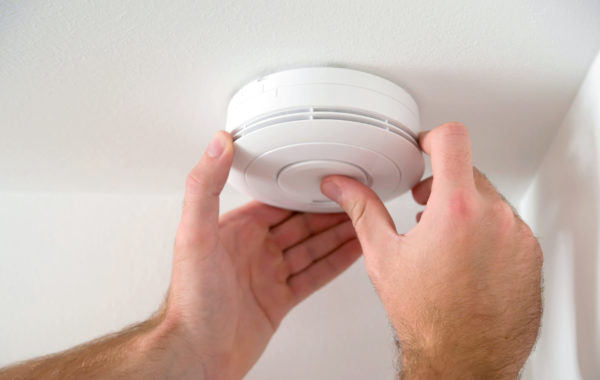
Carbon monoxide poisoning is something everyone should be concerned about. Every year, exposure to carbon monoxide sends more than 15,000 Americans to the hospital and results in more than 500 deaths. Gas furnaces, fireplaces and water heaters all produce carbon monoxide, which is why it is essential that you have carbon monoxide detectors near all of these appliances. With that in mind, here is a full guide to carbon monoxide detectors and where they need to be installed in relation to your furnace and other appliances.
Recommended Distance From Furnaces and Other Gas Appliances
The basic rule of thumb is that you should have a carbon monoxide detector within 5 to 20 feet of your furnace. You will also need additional detectors near every other gas-burning appliance in your home. Most experts say that the detectors should be around 15 feet from every gas appliance. The same is also true for wood-burning stoves or any other combustion appliances.
If the detector is further away, it may not detect the gas immediately and only trigger the alarm once it is too late. If the detector is too close to the appliance, you may end up frequently getting false alarms. This is because furnaces and other gas-burning appliances can sometimes give off a small, harmless amount of carbon monoxide when they first start. If the detector is too close, this can trigger the alarm even when there is no actual risk.
Where Else Should I Have Carbon Monoxide Detectors?
In addition to having carbon monoxide detectors near any fuel-burning appliances, you should also have at least one additional unit on every floor of your home. Carbon monoxide detectors should also be placed within 15 feet of every sleeping area in the home, and many states like Illinois require this by law.
If all of your bedrooms are centrally located in one part of the home, you will only need one unit in the hall outside the rooms. However, if any of your bedroom doors are more than 30 feet apart, you will need separate units outside each room. If you have a large master bedroom where your sleeping area is far from the door, we recommend that you instead install a unit inside your room within 15 feet of your bed just to be safe.
There are also specific recommendations for homes with attached garages. The reason for this is that many people start their vehicles and let them idle in the garage. Even if your garage door is open, this can still quickly cause a dangerous build-up of carbon monoxide. For homes with attached garages, you should always have a detector inside the home within 10 feet of the door leading out to the garage. In addition, you should also have an additional detector in any rooms located above the garage.
Why a Carbon Monoxide Detector Near Your Furnace Is Essential
The importance of having carbon monoxide detectors near your furnace cannot be overstated. While other gas appliances can give off carbon monoxide, furnaces typically produce the most. When everything is working properly, carbon monoxide and other harmful combustion gases should vent directly through the flue and outside the home. However, if the exhaust vent is damaged, blocked or improperly designed, it can allow the gases to escape into the rest of the building.
Carbon monoxide can also escape from the furnace if the unit’s heat exchanger is cracked. The heat exchanger is located inside the unit’s combustion chamber and it is what allows the heat from the burning gas to warm the air. It also seals off the combustion chamber from the rest of the HVAC system to prevent carbon monoxide from leaking out. If the exchanger is cracked, gas can easily flow out and into your ductwork. When this happens, the blower fan will circulate it throughout the entire home.
It is also imperative that you have detectors near every bedroom. Many carbon monoxide poisonings happen in the winter during the night when the furnace runs more frequently. If the detector near your furnace or other appliance fails, the units outside your bedrooms will act as a backup to ensure you will be alerted to any carbon monoxide issue.
The best way to ensure that your furnace can’t leak carbon monoxide is to have it professionally inspected and maintained at least once a year. At Bash Heating & Air Conditioning, Inc., we specialize in furnace maintenance and we can repair any issues you may be having. We also install and maintain other HVAC units including air conditioners, ductless mini-splits and heat pumps. If you have any issues with your home’s ductwork, we also specialize in HVAC sheet metal fabrication. Contact Bash Heating & Air Conditioning, Inc. today to have your furnace inspected or if you need any other HVAC service in Champaign.

